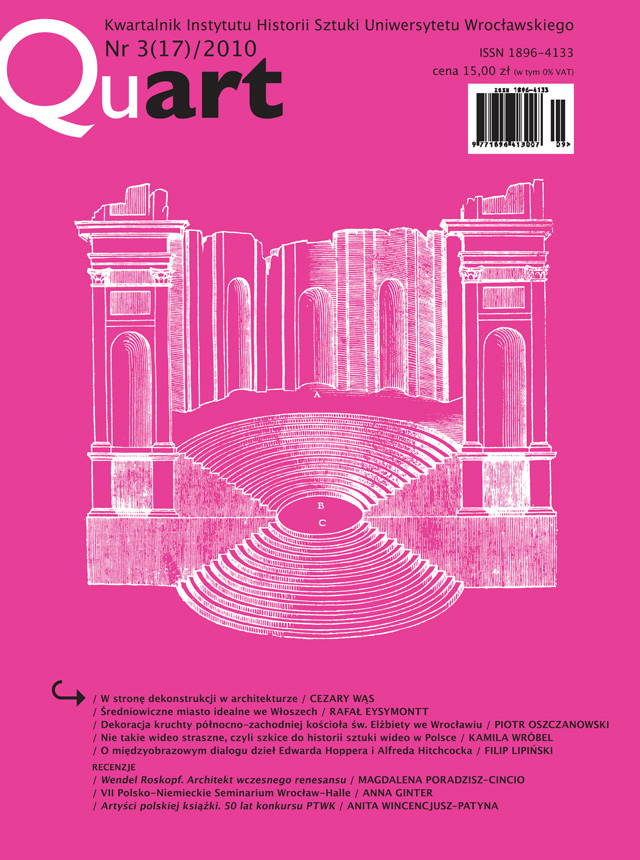Średniowiczne miasto idealne we Włoszech
The ideal medieval city in Italy
Author(s): Rafał EysymonttSubject(s): Fine Arts / Performing Arts, Architecture, History of Art
Published by: Wydawnictwo Uniwersytetu Wrocławskiego
Summary/Abstract: The concept of the ideal city is usually associated with Early Modern cities (Antonio Filarete’s treatises), it may be connected however, also with the Middle Ages. On the one hand it can be illustrated by philosophical and theological treatises where an idea of ‘heavenly Jerusalem’ appeared (Tychonius, St. Augustine, St. Thomas Aquinas), on the other hand by painterly images, eventually by cities themselves, which were erected in reality. The thesis about a medieval ideal city can be best illustrated with examples from Apennine Peninsula. As a certain ideal we can treat both the cities which were created as a result of subsequent stages of their development, erected in an organic way though subordinated to aesthetic rules during these changes (Siena, San Gimignano, Orvieto, Genoa, Pisa, Lucignano), and the cities that were realised according to an earlier plan. In the first case idealisation can be observed in forming the city silhouette, its main squares, street courses and eventually also in the architectural disposition of street frontages (Siena, Pisa, Genoa). Aesthetic laws on Apennine Peninsula of that time used to have their theoretical support (a modular disposition of a frontage can be related to mathematical and geometrical practice of those days – works by Leonardo Fibonacci, the author of Practica Geometriae from 1220-21). It was also the case of the cities designed as a whole. Plans concerned not only social matters and functional systems but also the very shape of a city. Here as the best examples come cities-colonies of The Republic of Florence from the beginning of the 14th century (San Giovanni Valdarno, Castelfranco, Terranuova, Firenzuola, Scarperia). Rules of aesthetic formation are also confirmed by preserved urbanistic designs, originated from the beginning of the 14th c. (Talamone). Eventually there are cities in Italy which are original works connected with an obvious intention of a founder and a strictly defined both in an urbanistic and architectural scale artistic concept (Pienza). Concerning this a medieval city in Italy is not only a complex of burgher plots and monumental edifices surrounded by city walls but an artistic artifact subordinated to thomistic theories of beauty comprising three fundamental elements: integritas, proportio et claritas.
Journal: Quart
- Issue Year: 17/2010
- Issue No: 3
- Page Range: 18-38
- Page Count: 21
- Language: Polish

